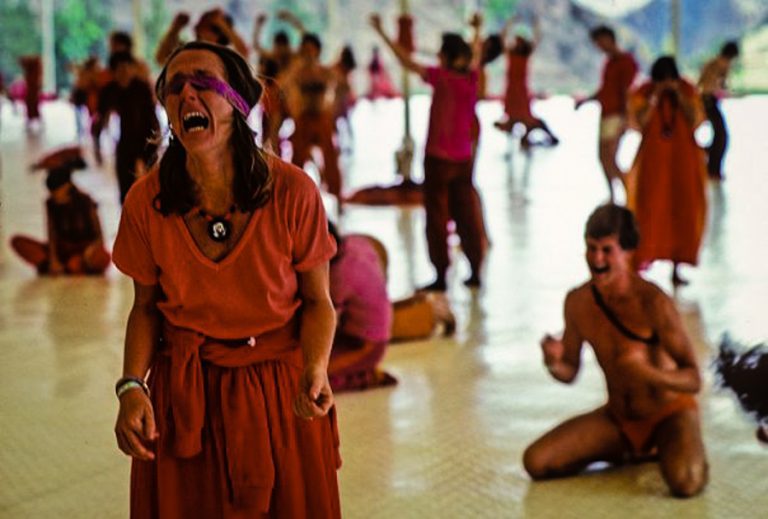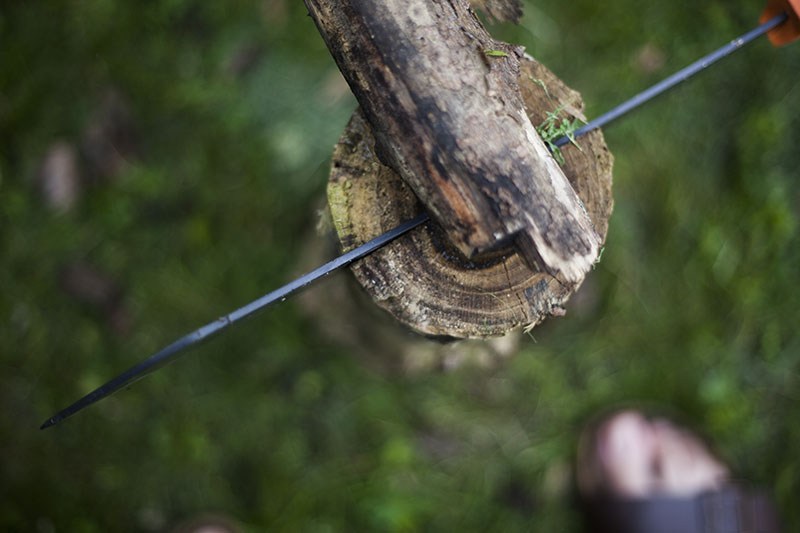One Month after SHTF; Are you Psychologically Prepared?
Psychological preparedness is a radically important part of survivalism and might possibly be the determining factor for long-term survival. In fact, the first step toward getting prepared is making a conscious affirmation to develop a will to live. I am writing this article because I suspect that most people probably have no idea where or how to begin psychological preparation for SHTF. One can only wonder about the psychological well-being of most Americans given the statistics of Americans on antidepressants, anti-anxiety medications, mood altering drugs, etc. We live in an isolated world where people mentally escape into social media, television and Pokemon-go.
I developed a five step mental practice for psychological preparedness for SHTF. When or if certain horrifying events unfold, I plan to not be completely shocked but to quickly move into acceptance and action. I have already considered this scenario and planned as best I could in advance. I feel psychologically prepared because I faced these scenarios in my mind already, and overcame. I visualize myself going through possible emotionally unsettling events in SHTF and plan my emotional response. I also gather possible preps or plans that can be done in advance of these horrendous situations. Sometimes my plan is just knowing that I have decided what I would do, could do and absolutely will not do according to my principles. I’ve already considered a moral justification for certain events and plan to not torture myself with guilt should I need to act to defend myself or family.
First, I will explain the five step mental practice for psychological preparation for SHTF. I created this psychological preparation based on my personal experiences and study in philosophy, religions and psychology. Second, I will list 15 emotionally difficult events to process which could possibly happen in SHTF for which I personally psychologically prepare.
Five Step Mental Practice for Psychological Preparedness: Admit, Reflect, Observe, Resolve, Create.
Step One:
Admit the possibility of certain events. You may benefit from focusing on the reality of one particular disturbing event. Break out of your psychological comfort zone and actually ponder a variety of unpleasant, shocking and otherwise disturbing ideas which you may possibly have to face in SHTF. Humans naturally like to avoid ideas which cause pain and discomfort. Our society shames us into believing we are ‘doomers’ or ‘fear-mongers’ if we consider certain ideas. These ideas exist and their materialization are a real possibility. Think to yourself ‘If this happens, I will overcome it. Life is always changing and full of unexpected opportunities. I will prepare to thrive. Sometimes events are horrid but there are also many wonderful events in life. Everything passes eventually. I will go through this and good things are waiting for me in life.’
Step Two:
Reflect specifically on your initial feelings regarding each SHTF event. Notice your mental dialogue. Think of each series of thoughts and each conversation you have with yourself. Perhaps one series of thoughts is nervous and anxious, another is depressed, another is like a planning schedule book making a list of things that need to be done. You are the master of these thoughts and you have the ability to direct these thoughts into a productive plan. You control how much mental energy you want to spend upon each emotion. Think to yourself “I considered this event before it happened which gave me a chance to plan and become strong. I know whom I am; I am a survivor. I acknowledge my fears, anxieties, grief and there is a proper time and appropriate way to express my emotions. People throughout time overcame these events and I too will overcome. I will channel my thoughts and energy into a productive path forward for myself and family.”

I visualize myself going through possible emotionally unsettling events in SHTF and plan my emotional response.
Step Three:
Observe your thought process of grief associated with the difficult SHTF event. SHTF will not only include the death of strangers, neighbors, friends and possibly loved ones but will include other types of loss. Death comes in many forms, such as: the loss of a way of life, the loss of comfort, the loss of normalcy, the loss of dreams for the future, the loss of expectations about the way life is, should or will be., the loss of status, the loss of physical wealth. Psychologists, like Kubler Ross, suggest that humans go through stages of grief and mourning: A. Denial and Isolation, B, Anger, C. Bargaining, D. Depression, E. Acceptance. Observe the series of thoughts you have regarding each of the stages of grief when you consider an emotionally difficult SHTF event. For example, how does this event make me angry? How depressed would I feel if this event were unfolding right now? What are my emotional losses during this event? Think to yourself, “Certain losses in life are very painful but I will use these experiences to become more loving and wise. I will redefine normal, create new dreams and live in the present with hope. There is a time for grief and mourning and a time for joy. Sadness is only present because I have loved and experienced good things, which is a blessing.”
Step Four:
Resolve ANGER over INJUSTICE. Resolve fear. Resolve your line in the sand. Resolve what you will and will not do if desperate. Resolve to be honest with yourself, without judgement. Some things in life are so horrible that they are radically difficult to imagine, endure and accept. The problem of pain and justice has long haunted humanity, reflected in literature, art, myths and historical narratives. Sometimes you don’t understand why certain things happen or what meaning they have. Sometimes you will never understand. Other times you will only understand years later. Some things are disturbing and break your heart. Yet, for every ugly event in life there are plenty of opportunities to choose joy, love, peace and happiness. Think to yourself, “For whatever reason painful and unjust things happen in my life, I hope to find a meaning and lesson from my experiences. I reject being angry at things I cannot change and that are in the past. I will live in the present moment and choose to become happy, to live and to love. I trust that good will eventually overcome and justice will prevail. I will not simply react to events in my life, I will form an intelligent plan of action in my own way, on my own terms.”
Step Five:
Create a thinking method so that you feel empowered and in control. Create a plan. Ultimately, in any SHTF scenario you can only control yourself, if that. Knowing yourself is power. You CAN always choose how you will react to any situation. You can choose how you will feel and change your negative feelings to keep them from hindering your progress. Acting based on your principles and ideas, not simply reacting to stimuli, will help you achieve your goals amid a crisis. Endurance of pain can be used to build psychological strength, if you choose and control your thinking patterns. Think to yourself, “I knew this could happen, I prepared and I will overcome this through my positive actions and emotions which I control. I will create and the goodness I want in my life. I will improve my life and the lives of those around me. I will keep learning and improving for all the days in my life. I will create goals that are attainable and plans to achieve them over time.”
15 emotionally difficult events to process which could possibly happen in SHTF for which I personally psychologically prepare.
Here is my unpleasant list of things which we may encounter in SHTF but often never consider. Most of the apocalyptic genre movies that I have seen fail to adequately include these possibilities. I compiled this list from several sources, including: what I have read historically happens during mass societal unrest when people become desperate, people I have talked to that personally lived through the recent wars in Lebanon and my own imagination about what could logically happen during certain SHTF situations. The 15 ideas on this list most likely happen, or begin to happen, within the first month of SHTF:
1. Suicides. When the lights go out permanently and the food is finished people will lose hope. The realization that life will never be the same will overwhelm many. In the USA depression and suicides are already high, pre-SHTF. Hopelessness will cause mass suicides and people see death as an inevitable option. Simply realizing they don’t have food for their kids or pets will send some people into a suicidal state. I imagine in SHTF after one month there will be a horrifying epidemic of suicides, mass suicides and suicide parties. Walking into your neighbor’s house only to discover all of them dead in their bed will become a common sight. Suicides are contagious and once they start they will spread.
2. Starving people will eat their pets and any pet they find. Desperation will cause some to eat anything that moves. Parents will choose to sacrifice their pet in order to try to prolong the life of their children. As societies declines homeless pets will increase such that gangs of dogs and cats will be an indicator that certain SHTF scenarios may be pending like economic collapse. However, a month into SHTF it will become harder to find homeless pets because they have already ended up on someone’s dinner table. The guilt of eating family pets will drive some to suicide.
3. Bodies will pile up and there will be no local process for burials or clean up after people die. Whomever is left will have to deal with burials, possibly of mass people. The smell of rotting people will be overwhelming. This smell will attract rats, bugs and all kinds of pests. People will have to get together, dig graves and move these bodies with their own hands. People will find themselves having to bury their friends, family and neighbors. The smell of the dead will permeate throughout cities.
4. Garbage will pile up like never before in the cities. When the toilets no longer work people will not understand that they need to bury their human waste. Garbage collection will cease. The smell of the garbage piles will rival the smell of the corpses. The garbage will explode into bugs and likewise attract a variety of pests. Most importantly to realize, the garbage piles are a serious danger because they will cause sickness. Lack of sanitation will lead to disease epidemics unseen in western society. I’m sure there will be a stage where people will sort though the garbage looking for food and become sick from eating from the garbage.
5. Lice, fleas, rats and pestilence will increase in the warmer climates. The days of controlling pestilence through medicine, bug spray, rodent poison and treatments will be over and a lack of sanitation will attract even more pestilence. With pestilence will come diseases. People will hunt and eat rats.
6. Simple diseases and infections will be fatal. There will be a return of diseases which people are not familiar with in modern society because they had been nearly eliminated. The lack of sanitation will cause all sorts of diseases. Stress weakens the immune system and combined with lack of medicine, lack of good nutrition and poor sanitation people will die more frequently from simple infections that would have been nothing pre-SHTF. People will drink unclean water, eat rotten food, and live in filth as diseases spread like wildfire. I have a creepy fear that in SHTF rats will eat dead bodies and people will eat rats that ate dead bodies plus some will eat dead bodies and a ‘mad cow’ type human disease will become an issue.
7. People will become cannibals. A certain percentage of the population in SHTF will definitely turn on itself and resort to cannibalism because they are starving. People don’t know how to forage for weeds or bugs and especially in cities there will be people who would rather eat their neighbors than die. Maybe some will begin their cannibalism simply because they don’t want to watch their children die. Some people will be so hungry that when they come upon a corpse they will decide to eat it or feed it to their children.

Some people will simply shut down in the face of overwhelming despair.
8. People will go insane. Mass insanity will be noticeable within the first month of SHTF for a number of reasons. Some people will go insane because they are off their medication. Some people will be insane because their fix of illegal drugs has come to an end. A likely number of drugged out junkies or alcoholics in SHTF will either die from withdrawal or go insane. Some people will simply go insane because they lack the coping skills to deal with life in SHTF. Of course, people who become cannibals will be insane. Some people who witness something horrible like the death of a loved one or find themselves in a violent self-defense situation will just not be able to cope with the reality at hand.
9. Self-Defense will become an issue. Ahead of SHTF you need to prepare yourself for the idea that if someone comes to harm or kill you or your family there could be a time when hiding isn’t enough. How far will you be willing to go to protect yourself and family? When you do what is necessary to maintain your safety you cannot fall apart psychologically.
10. Human slaves. When there are no laws you will encounter a variety of really sinister people who take advantage of SHTF in unexpected ways. If there are no punishments for crimes a certain number of people will act on barbaric and uncivilized urges. I imagine that some people who become cannibals will have a few people they store and use as slaves before they eat them. Also, some perverts will have slaves for sexual exploitation.
11. Sexual exploitation. With no punishments for crime and rising insanity sexual crimes will increase in SHTF. Crimes in general will go up, but I anticipate sexual crimes will be the most intense increase because some people will decide they want to party until they die. Gangs will exploit women of all ages and force them to trade sex for food and supplies. Women will willingly offer themselves for food and supplies as well. A desperate mother with nothing to trade to feed her child will become an easy target for sexual exploitation. Some mothers will sell their own children for food or supplies.
12. Gangs will increase. There will be groups of looters who go from house to house looking for supplies, food and things they wish to steal. Most likely there will be some gangs who don’t understand that once the lights go off they won’t come back so gangs will be stealing completely useless items like televisions and electronics. Some people actually do not prepare for SHTF because they have the mindset that if they are desperate in any way they can always steal what they need and take things by force because of their weapons and numbers in their gang. Some people actually look forward to opportunities to riot, loot and have crime sprees.

13. Cults and religious extremes. Tragedies tend to make people more religious. A number of people during SHTF will look for religious answers for their experiences. There will be a few people who take this opportunity to gain power through becoming cult leaders. People will be vulnerable to someone who has answers, offers comfort and provides direction. Also, a certain number of people will believe it is the apocalypse and they might tend to believe anyone who has a silver tongue and claims to be Jesus, or some kind of savior. Even pre-SHTF there are cults and people will certain mental problems that cause them to literally believe they are Jesus, Superman or even the Lucifer. Certainly, this sort of experience will increase in SHTF. Unfortunately, there might be some people who believe that God is punishing them and they must repent through sacrificing someone or something. People might form cults where they go around ‘sacrificing’ whomever they deem ‘sinful’ that they think incurred God’s wrath upon humanity.
14. Squatters, displaced and homeless people. When people begin evacuating the city on foot in search of food, supplies or a place to avoid SHTF there will obviously be an increase of squatters. The entire idea of ‘ownership’ of one’s house, food, possessions and land will be under scrutiny by mass numbers of people who think ownership is earned through taking what they want. There will be amazing acts of both ugliness and generosity. On the positive side, racial tensions will most likely dissolve because people will eventually need each other and starvation knows no skin color. For self-defense or other reasons there will be sneaky people who booby trap their house, taint food and set traps for squatters.
15. Emerging systems of justice that are very primitive. After SHTF and during the period of restoration once society slowly begins to restore order there will be a return less tolerant systems of justice. There will be more of an ‘eye for an eye’ way of thinking in society. Small groups will team together and create a strict, enforced code of ethics. People who rape, murder, steal or violate laws will be made a public example of what happens to criminals. Public executions will be common and swift, most likely in the form of hanging. In the worst case scenario, a sinister leader will rise to power.
In conclusion, no one wants to think about, much less actually go through these emotionally disturbing events. These events will never be pleasant but you can assign them value and meaning. Through psychological preparedness, you control the level of horror you will emotionally experience as well as your emotional reactions. You control if, how and when you will react. If you have already contemplated the darker side of SHTF and formulated a mental plan, as well as physical plans, you will definitely feel more in control when the world seemingly spins out of control.
One Month after SHTF; Are you Psychologically Prepared?
Psychological preparedness is a radically important part of survivalism and might possibly be the determining factor for long-term survival. In fact, the first
























 Boker Plus Vox Rold Knife
Boker Plus Vox Rold Knife Gerber Bear Grylls Parang Machete
Gerber Bear Grylls Parang Machete












